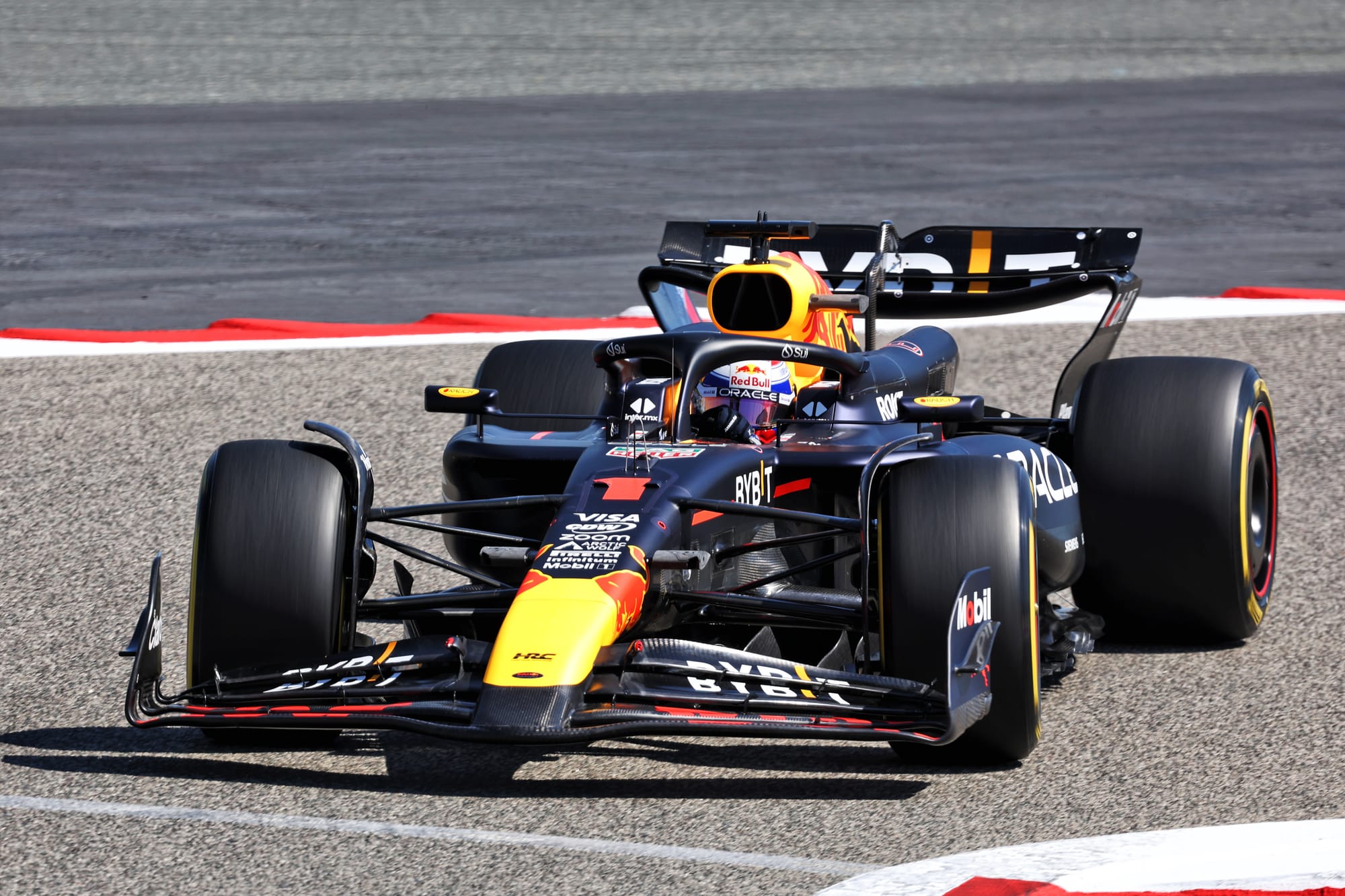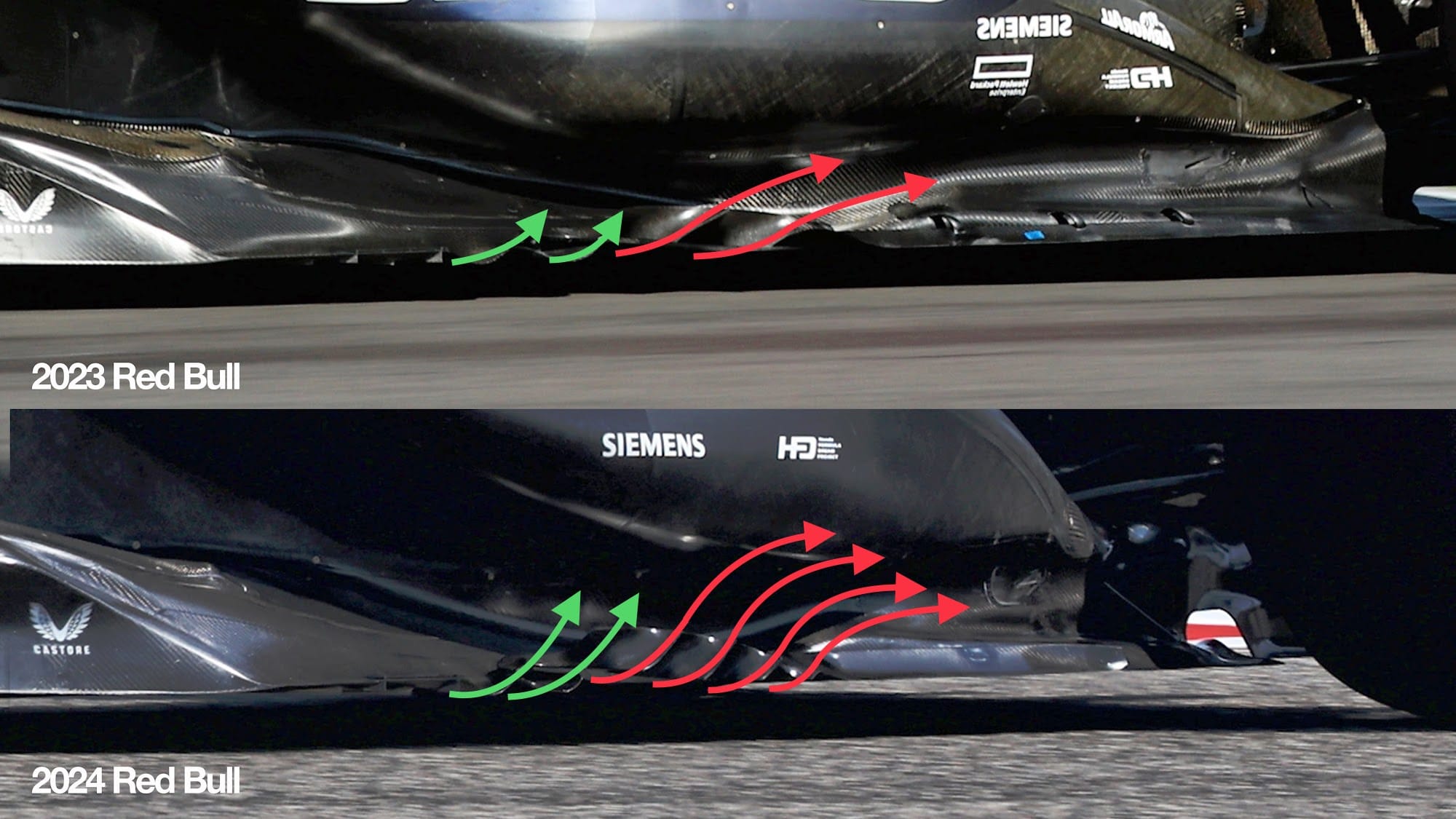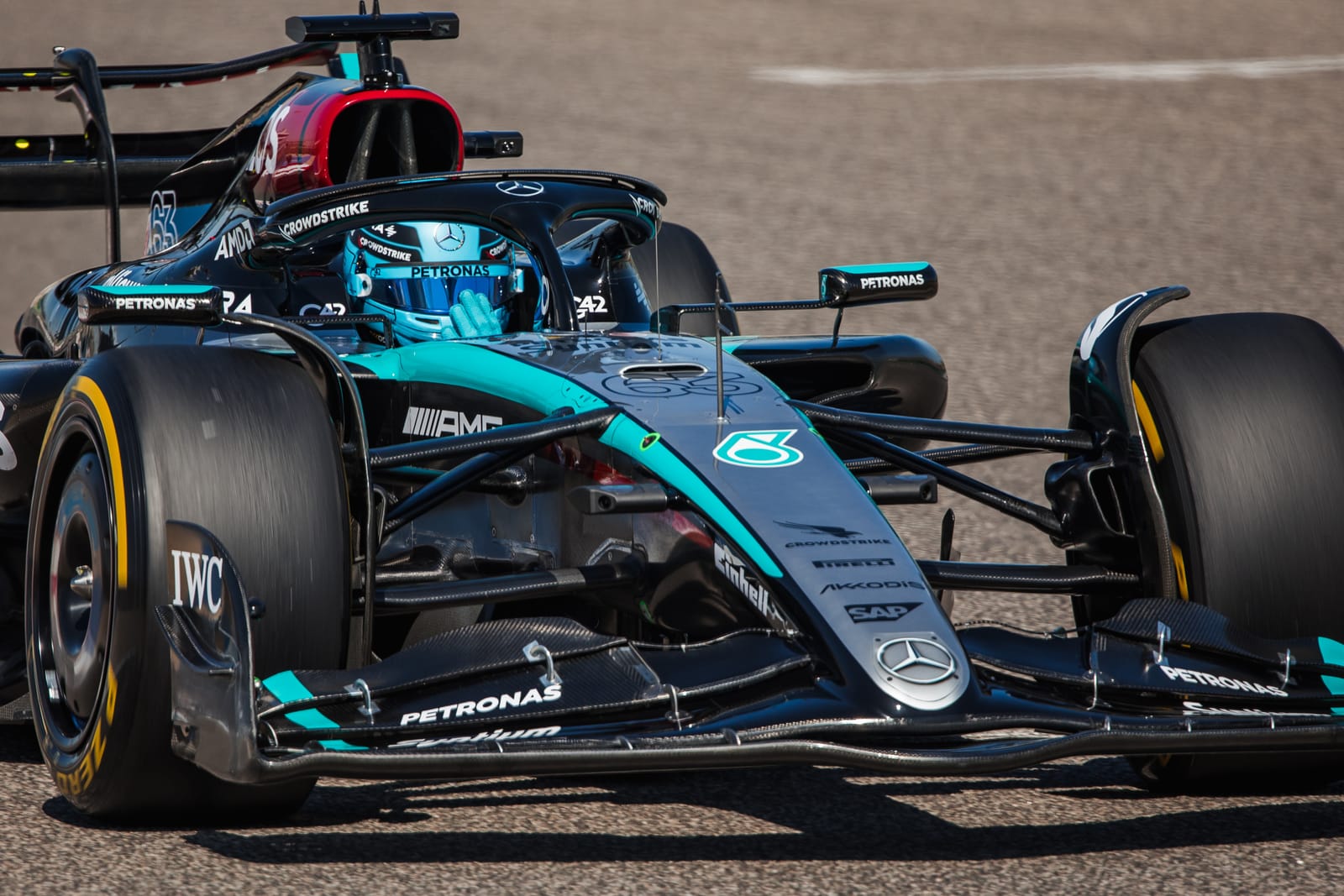Up Next

Red Bull’s unusual treatment of the radiator intake and sidepod undercut on its 2024 Formula 1 car initially looked like a second vertical rad inlet beneath the conventional horizontal one - but it was difficult to be certain based on the car launch images.
This apparent new direction caused quite a stir, and many people started to call it a copy of a Mercedes' ‘zero’ sidepod concept, but it is far from that.
Red Bull is one of F1’s most secretive teams, and is doing its best to hide what it can from prying eyes, but our eagle eyed photographers have still managed to capture a few more revealing shots.
We often wonder why the bodywork has so many lumps and bumps on it - they are mainly to house all of this cooling and electronic gubbins.

The components I have highlighted in red and yellow (above) I believe are radiator cores, to cool the engine’s water and oil systems. The lower one might be an intercooler, so fluid to fluid, but either way you still need airflow to take the overall heat out of the system. The rest is just essential ‘stuff’ it takes for these cars to run.
Externally, this ‘stuff’ all needs to be clothed in nice smooth-ish aerodynamic body surfaces.

In this picture I have highlighted what I believe to be the radiator inlet duct in green (above).
Last year it was in the top surface of the sidepod, this year it is under the top surface (green highlight) of the sidepod - still very much a letterbox shaped inlet, sat as high as possible.
The vertical inlet (blue arrow, above) has been the source of confusion and intrigue. Pictures we saw initially suggested it could be a simple aerodynamic turning vane. However, having had a look at it myself in the pitlane I can see it is an inlet duct to ‘somewhere’.
I don’t know what it is cooling, but if I was to take the area of the upper green inlet and the area of the yellow inlet together they look to me like they are larger than what Red Bull ended up with last year.
It could be that this vertical duct is also helping control the boundary layer build up on the side of the chassis.

I have highlighted the airflow with the orange arrows (above) showing how it simply bleeds off the side of the chassis - allowing higher energy airflow (white arrows) to carry on around the new slightly wider chassis side surface.
If you don’t control the boundary layer - the airflow closest to the car surfaces - build-up on the side of the chassis, it will, in effect, make the chassis wider in that area than it really is and reduce the mass flow and the flow velocity in that undercut area.
TRACKSIDE VIEW + FLOOR THOUGHTS

It’s only the first day of testing and my initial observations of the Red Bull on track early today was that it didn’t have as much front grip as Verstappen wanted. The front end seemed to be a bit lazy and on a couple of occasions it broke into massive understeer.
But by the time we stopped for lunch, it was business as usual. Verstappen was fastest, so Red Bull must have found a solution to that initial problem.
Over the last couple of seasons, Red Bull has been the trendsetter as far as the visual concept is concerned but to everyone’s surprise it has changed direction subtly for 2024.
In the comparison shot below, we can see that the plain view body profile (green highlight) is not so vastly different.
During last season, Red Bull lifted the lower side of the radiator inlet twice and in reality if it still wanted an inlet that left it nowhere to go. So the team simply reversed it.

Now, the inlet is under the top body surface so overall the divider which separates the over body airflow from the sidepod undercut airflow is probably five centimetres higher.
Even the profile of the leading edge of the underfloor (blue highlight above) is very similar. So although it looks visually quite different, it is actually quite a small change. But having this increased airflow through the sidepod undercut has given Red Bull the chance to be more aggressive with the floor section highlighted by the red ellipse.

Looking at this area more closely, we can see that the outer turning vanes (red ellipse above) have gone from two to four. Red Bull still has the twin forward smaller vanes (green ellipse above).

Looking more closely at the potential improvement in the airflow in this area, having that extra-sized sidepod undercut and more aggressive turning vanes (red arrows) allows Red Bull to pull more of the airflow out from underneath the front corner of the floor (green arrows).
Combine both those sets of arrows and you should see a decent overall improvement in this area, allowing the diffuser to have more effect on the airflow nearer the centre of the car.





